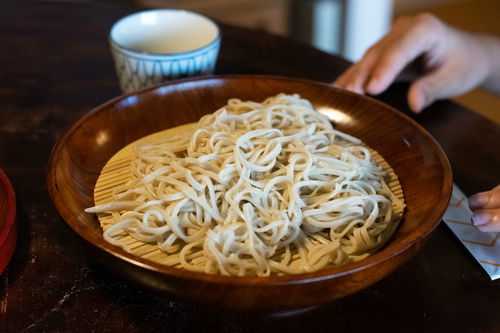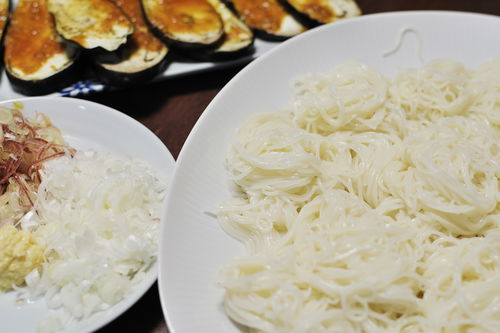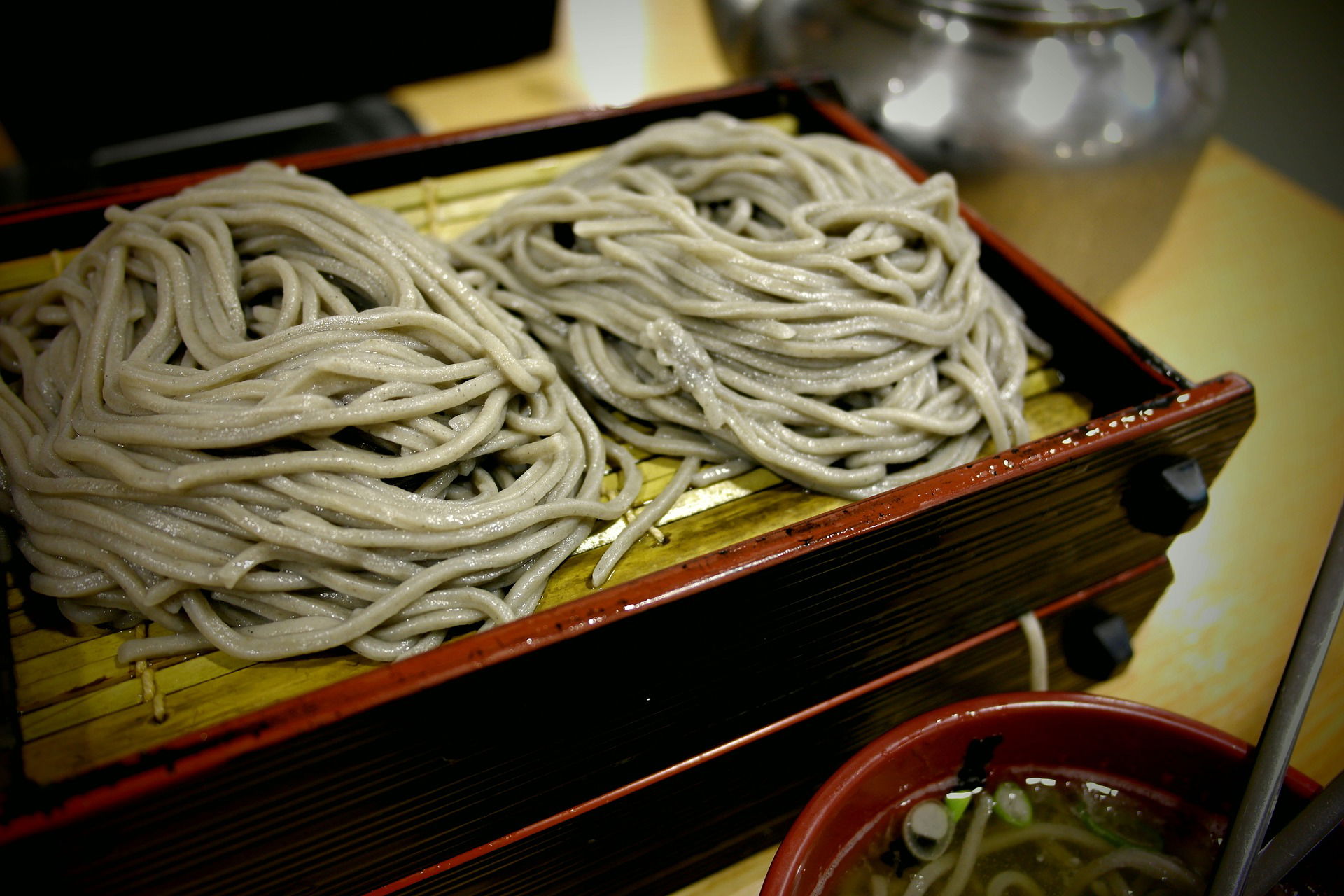Table of contents:
Japanese noodles play an important role in Japanese cuisine, along with rice. Hardly any household goes longer than a few days without noodles. But luckily there are so many different recipes and also noodle varieties that Japanese noodle cuisine is anything but boring. Noodles serve as a filling side dish or soup topping in Japan. They are eaten warm or cold, served with broth or offered with a dip. There are noodle dishes that are served in a single bowl and those that are only presented in a small side bowl. Japanese noodles all have one thing in common: they are eaten with chopsticks and are welcome to be slurped!
Noodles are all noodles, right?
Absolutely not! While Italian pasta is primarily distinguished by its shape, there are some very different noodle varieties in Japan. These vary in ingredients, color, consistency and shape. And of course, the different noodle varieties are used for different recipes. There are also different regions that are known for certain noodle specialties.
Why are noodles so popular in Japan?
For one thing, "Men" (the generic term for Japanese noodles) are seen as a very practical food. They are very quick to prepare, available at a low cost, and appeal to everyone. Secondly, noodles are incredibly versatile, can emphasize the other components of a dish, or stand out with a strong flavor of their own. Even if you want to eat out, you get noodles almost everywhere: from fancy restaurants to simple snack bars at the subway station to booths at festivals, noodle dishes are offered. Below you will find an overview of the most popular and most frequently eaten noodle varieties in Japan.
Soba
These are probably the healthiest noodles in Japan! Soba noodles are made largely from buckwheat flour. At least 30% of the flour used to make soba noodles must be buckwheat flour. This is supplemented by wheat flour. The higher the buckwheat flour content, the higher quality and also more expensive the soba noodles. But there are also soba noodles that are 100% buckwheat flour. In Japan these are known as "Juwari Soba". They are perfect if you have a gluten intolerance. In this case, these could be the only Japanese noodles you are allowed to eat! Apart from flour, only water and some salt are needed to make soba. I even tried to make soba myself once. I described my impressions in this post:

Soba noodles have a rather intense, earthy flavor. They are often eaten cold in noodle salads. Soba noodles are also very popular with cold dashi broth as a dip. This dish is called Zaru-Soba and is often served with Nori. Of course, soba also goes well in noodle soups. Hot soba noodles are available with tempura or duck. But you can also get soba that has been refined with matcha powder or the citrus fruit yuzu. Toshikosi is particularly popular – the soba noodle soup that is traditionally eaten on New Year's Eve, December 31st. Soba noodles are considered a symbol of longevity and health. Here are delicious soba noodles for your first soba recipe!

Ramen
These golden yellow noodles actually originate from China. But they are now so popular in Japan that there are even Ramen museums! Ramen noodles are very long and quite wavy when cooked. They are of course particularly popular as a soup topping. Ramen soup is served in huge, special bowls and topped with delicious toppings ranging from meat and tofu to egg to vegetables. There is also Tonkotsu ramen, where the cloudy broth is made from pork bones. Ramen is primarily sold dry and in portions. Further down we have linked our favorite ramen, which you can order very easily.

Egg noodles without egg
By the way: Although ramen is also called "egg noodles", it does not always contain egg! The characteristic consistency and color of ramen comes rather from alkaline salts - called Kansui. In Japan, only noodles containing at least 0.01% Kansui may be called ramen noodles! And: The golden yellow color of most ramen noodles available for purchase is actually due to the use of food coloring! In the following post we have summarized everything you need to know about ramen.

Instant ramen
The emergency food for hungry students and stressed employees: Instant ramen only needs to be poured with hot water - and you already have a delicious soup. In Japan, there is a huge selection of instant ramen soups in different flavors. But the classics are ramen with chicken flavor, miso flavor or soy sauce. For just 2 euros, you can conjure up a super delicious ramen dish. How? I'll tell you in the following recipe:

Udon
This is a thick, creamy white noodle made from wheat flour. They are elastic and have a very pleasant, chewy texture. Udon noodles can be bought either pre-cooked or dried. As instant noodles, they are also available freeze-dried. Udon noodles are most often used in Japanese noodle soup recipes, which consist of a delicious dashi broth, noodles and toppings.
Dishes like Kitsune Udon (topped with fried tofu), Chikara Udon (topped with Mochi) and Tanuki Udon (with flakes of fried tempura dough) are particularly popular. Udon can also be eaten very simply: by simply garnishing them with thinly sliced green onions. Basically, Udon noodles are often used in a similar way to Soba noodles.
If you buy pre-cooked Udon noodles, they are packaged in portions and vacuum sealed. They are ready to eat in just a few minutes and are ideal for stir-fries. We recommend these pre-cooked Udon:

Udong sind dicke Nudeln die aus Weizen bestehen. Diese sind bereits vorgekocht und müssen nur für weitere Minuten gekocht ...
Bei Amazon ansehen*If you buy the Udon noodles dried, they look a bit like spaghetti. They are perfect for dishes where you cook the noodles in the broth, such as soups, stews and hot pots.
Somen/Hiyamugi
These noodles are similar to Udon noodles. They are also made from wheat flour. Somen noodles are extremely thin, Hiyamugi are slightly wider than Somen, but still narrower than Udon. As trivia: Udon noodles usually have a diameter of more than 1.7mm, Hiyamugi noodles are between 1.3 and 1.7 mm thick and Somen noodles have a thickness of less than 1.3 mm. We especially like these Somen:

Somyeon sind dünne Weizennudeln, die innerhalb 3 Minuten fertig gekocht sind. Habe immer welche auf Vorrat!
Bei Amazon ansehen*Somen are usually served cold with the dipping sauce Tsuyu. In summer they are a great choice for cooling down the body. Somen are cooked very quickly and absorb the taste of sauces, dressings and spices very well. When hot, Somen are often put in miso soup and garnished with spring onions, nori and grated ginger. Sweet and sour sauces with vegetables or tofu also go very well with Somen. Hiyamugi are served essentially the same way as Somen. But there are also Hiyamugi noodles with green or pink coloring. Want some Somen? Then try out this recipe:

Noodle fishing
A special way to eat Somen is "Nagashi-Somen". The noodles flow past you in a bamboo chute and you have to fish them out of the water with your chopsticks. If you don't want to miss this unique noodle-fishing experience, you should definitely travel to Kibune (near Kyoto). In the small mountain village, Nagashi-Somen is the main attraction. Our colleagues from TabiEats have also discovered the fun of noodle fishing for themselves. Here you can see what it looks like (video in English):
Shirataki/Konjak noodles
These noodles have recently become very popular outside of Japan as well. The thin, translucent noodles are a perfect diet food because they have very few calories and very few carbohydrates. The noodles are 97% water! But Shirataki noodles score points with a lot of fiber and make you feel full for a long time. They are made from the Japanese konjac root. The word "Shirataki" actually translates to "white waterfall". The name fits because the noodles are very long and thin. But they are not only available in white, but also in brown, green and pink coloring.
Shirataki noodles have been part of Japanese cuisine for centuries. They have no strong flavor of their own, and can therefore be used in a wide variety of recipes. They are particularly often served in Japan in stews and hot pots. But they also go very well in soups and salads. Shirataki noodles are sold vacuum-packed and immersed in a liquid. Here is a delicious Shirataki recipe for you!

By the way: Shirataki noodles are even often used in "Italian" restaurants in Japan. So you might get "Shirataki Bolognese", for example!


Comments